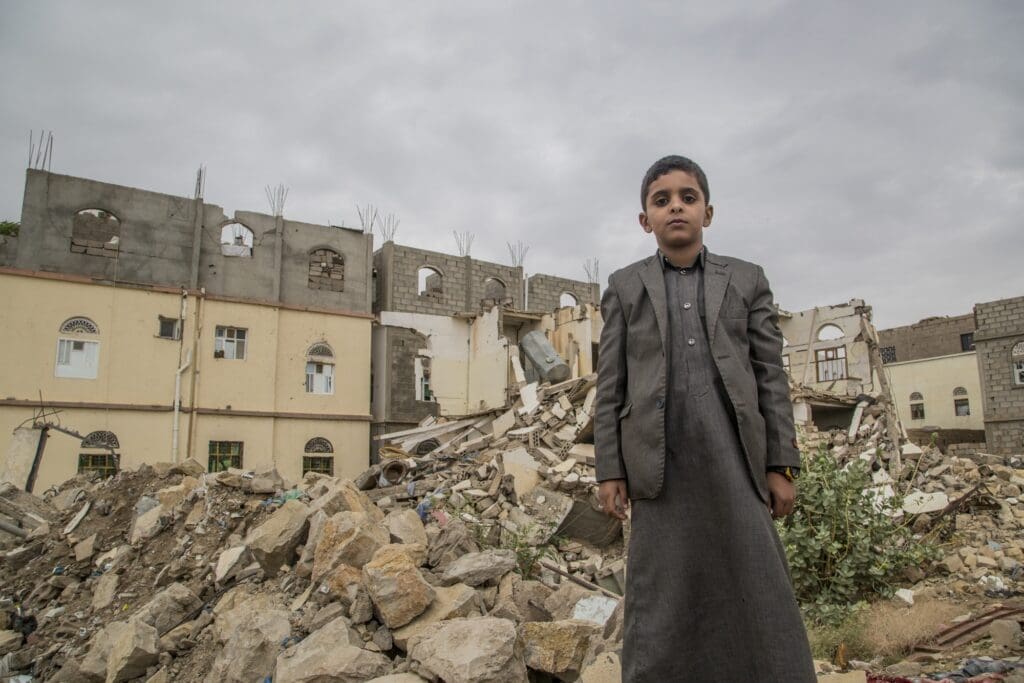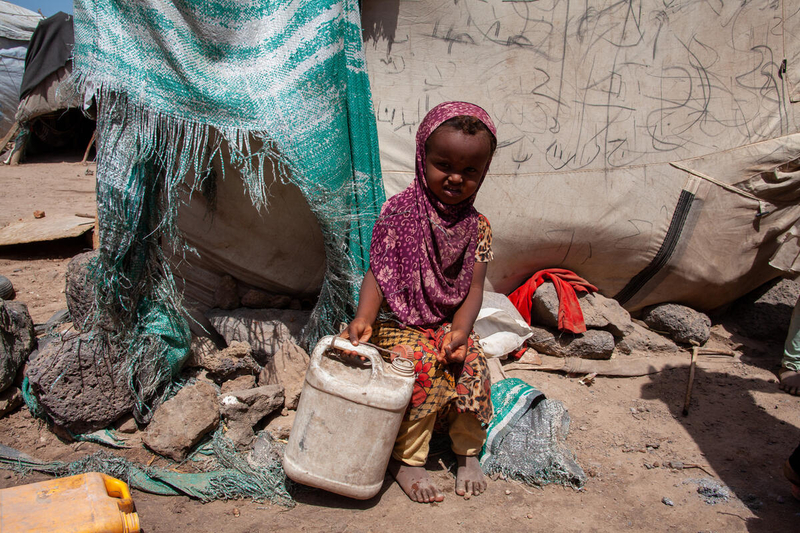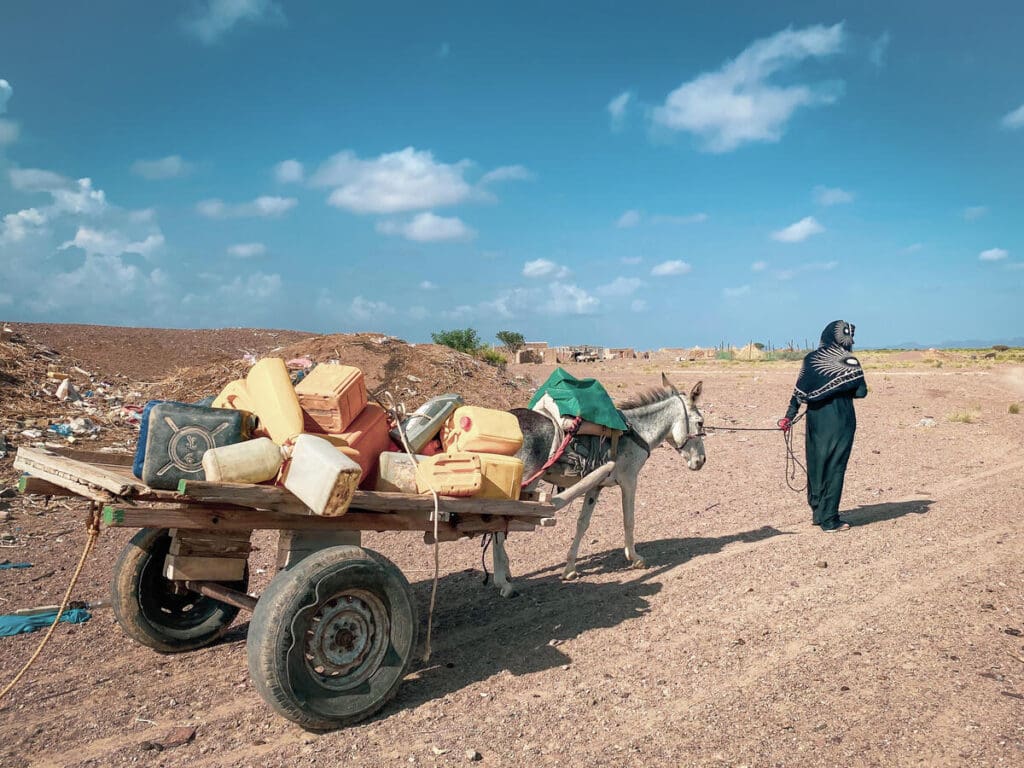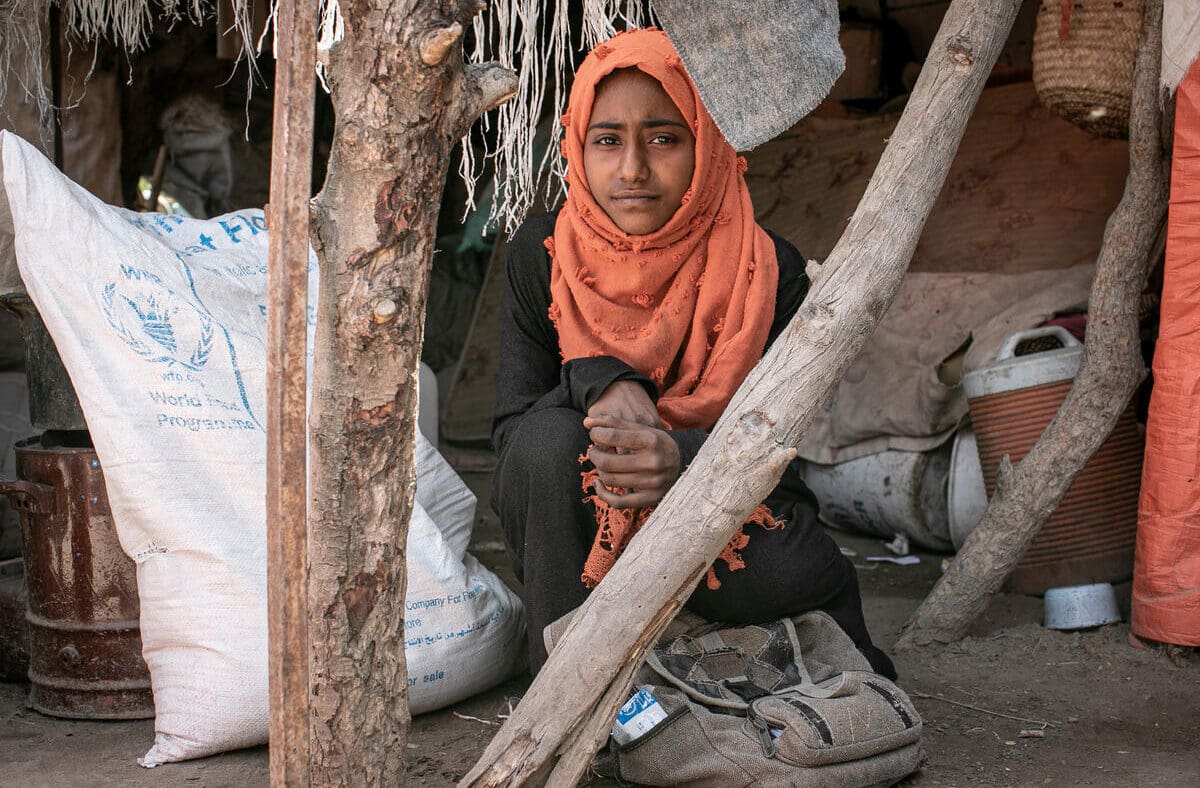
Yemen
Fighting Conflict & Hunger
Yemen is one of the world’s worst humanitarian crises, suffering from both climate extremes and conflict.
Looming Starvation
Food insecurity in Yemen is at an all-time high. Nearly 18 million Yemenis – over half the population – don’t know when they’ll eat another meal. With multiple threats closing in from all sides, untold numbers of innocent people could starve. We’re fighting hard to feed the most vulnerable people, but we desperately need more funds to do so.
people are internally displaced
people need humanitarian assistance
people are extremely hungry
Yemen Facts
Population: 34.4 million people.
Background: North Yemen gained independence in 1918. By 1967, the People’s Republic of Yemen is created in the south. The two countries merged into one in 1990.
Geography & Climate: Yemen is located on the southwestern corner of the Arabian Peninsula in the Middle East. It is bordered by Saudi Arabia to the north, Oman to the east, the Gulf of Aden to the south and the Red Sea to the west. The region is mostly a dry and hot desert landscape with mountains in the west.
Economy: Yemen is one of the poorest countries in the Middle East and North Africa (MENA) region. The country’s economy has been severely weakened by years of civil war. Its main industries include oil, gas, agriculture and fishing.
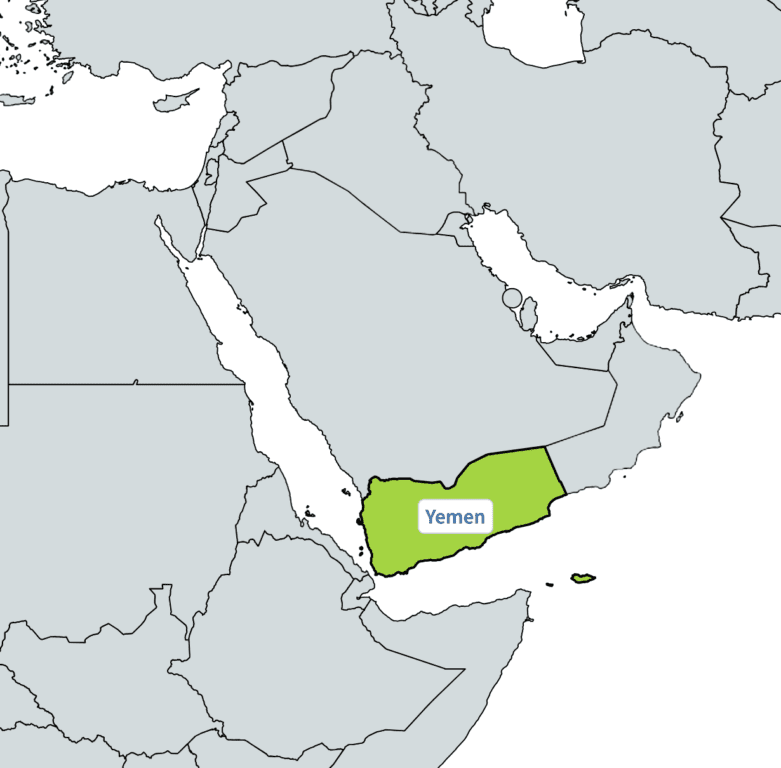
What’s Causing Hunger in Yemen?
SEE HOW WFP IS HELPING THE PEOPLE OF YEMEN
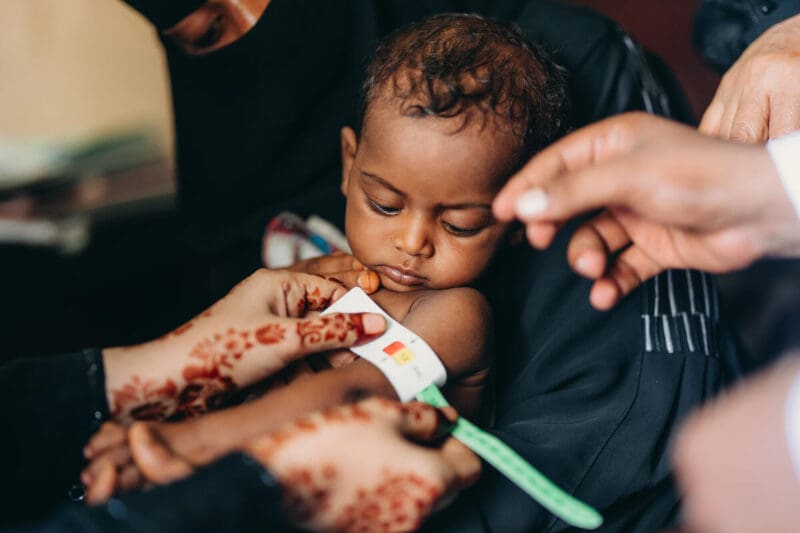
Nutrition Support
In Yemen, WFP provides both malnutrition prevention and treatment services for children under 5 and pregnant and breastfeeding mothers. In addition to specialized nutritious food, we provide cash-based assistance and nutrition awareness sessions.
Photo: WFP/Mehedi Rahman/2023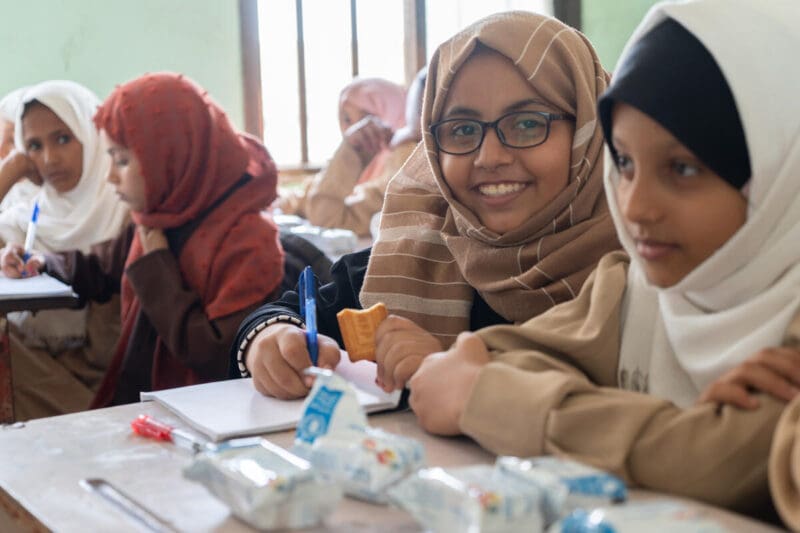
School Meals
In 2024, WFP reached around 1 million schoolchildren each month with school meals and snacks – including fortified date bars and high-energy biscuits.
WFP also runs a Healthy Kitchens project which provides locally sourced and freshly prepared meals to students. The integrated project provides a market for small-scale farmers to sell their crops, jobs for low-income households and nutritious meals for children to eat.
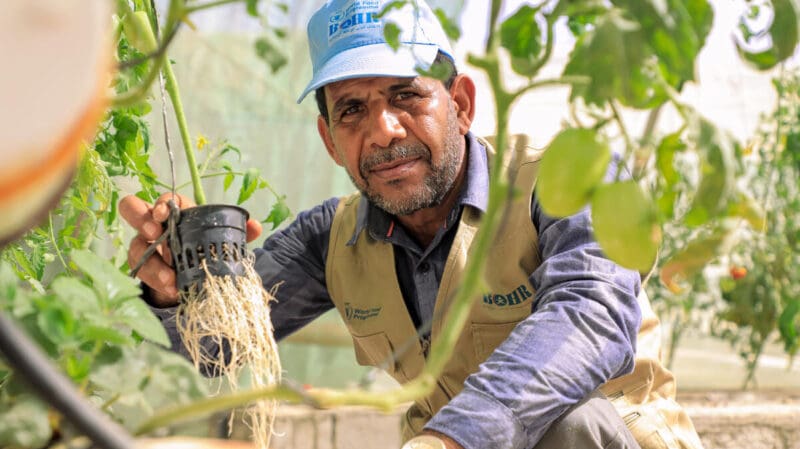
Resilience Programs
WFP works with communities in Yemen to rebuild assets like roads, agricultural land, irrigation systems, schools and health facilities. These projects contribute to people’s long-term food security by bolstering community assets, supporting small-scale agriculture and equipping participants with essential skills. Project participants also receive cash assistance.



THIS IS HOW WFP DELIVERS FOOD in Yemen
The U.N. World Food Programme has been working in Yemen since 1967. Through all the ongoing conflict and natural disasters, WFP is determined to bring food to vulnerable families. Today, it supports Yemenis with emergency food assistance, school meals, vouchers and e-cards.
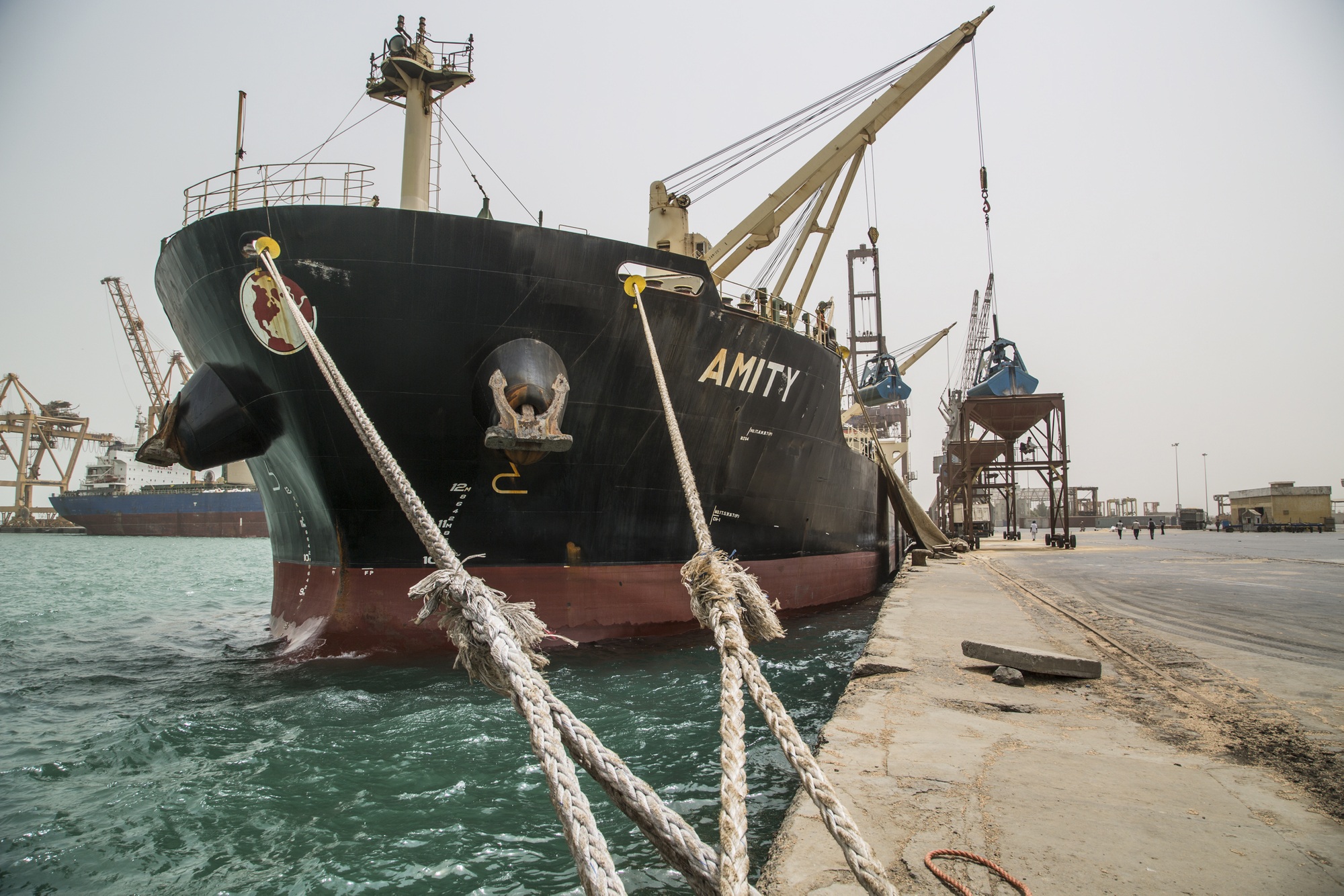
WFP is the only U.N. agency with its own shipping unit, delivering food assistance through the Red Sea and into strategic Yemeni ports. Dedicated staff negotiate shipping lines and navigate tricky routes to keep cargo safe. A single ship can carry 25,000 tons of wheat, enough to feed 2 million people for a month.

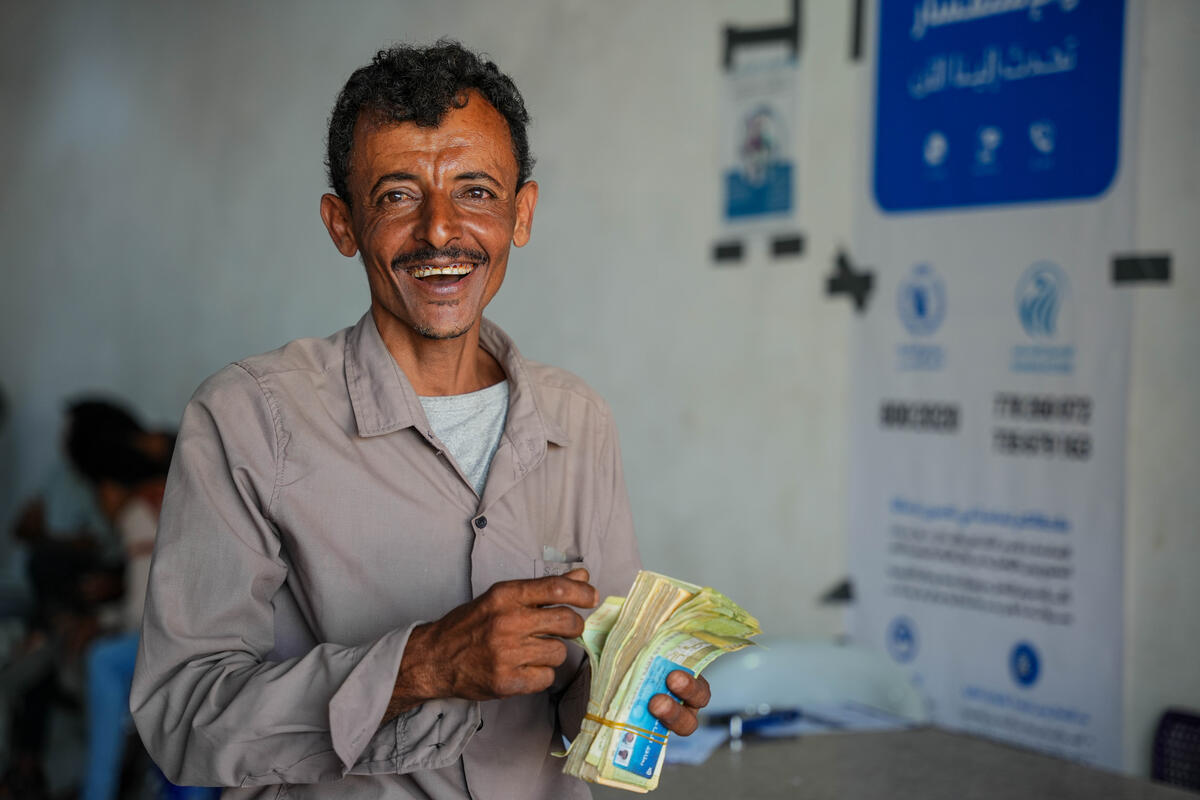
Where local markets are functioning and food is available but unaffordable, cash-based transfers give Yemenis the power to purchase food on their own terms. Families can buy fresh produce, fish, meat and other essentials. This year, WFP aims to reach 9 million people with cash and food assistance.

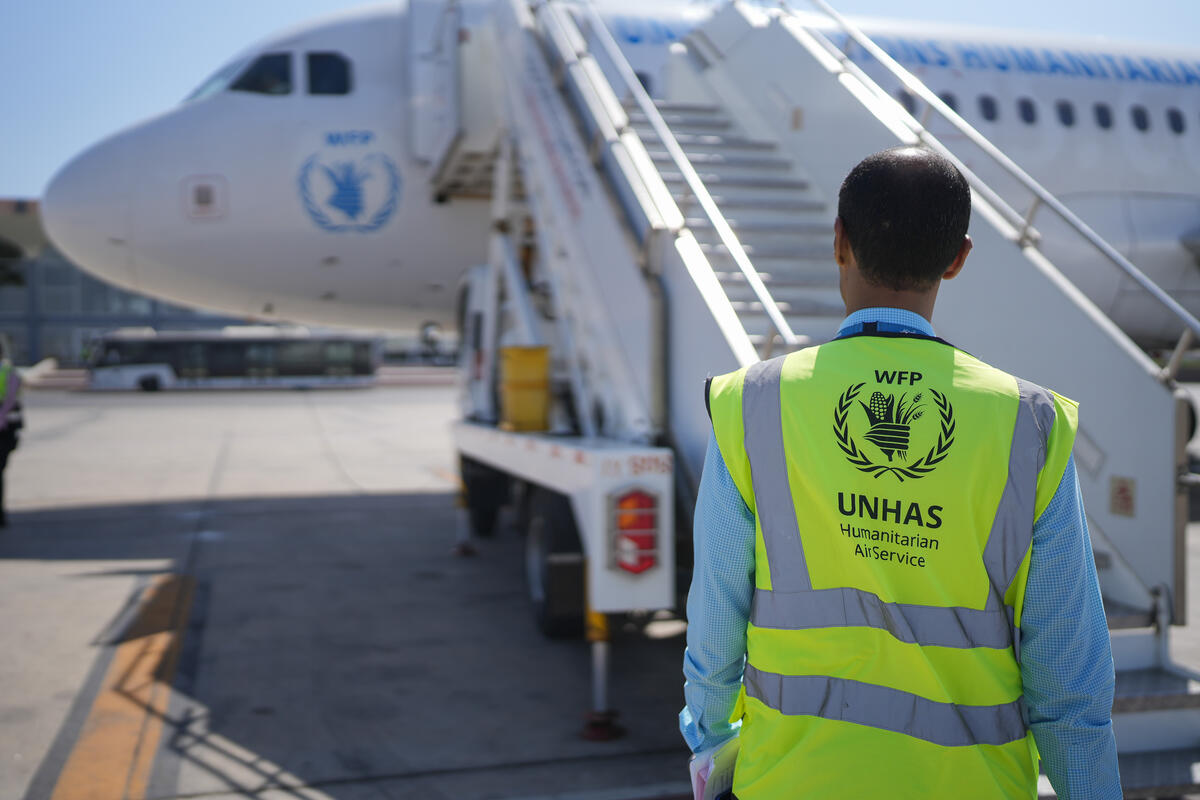
WFP manages the United Nations Humanitarian Air Service (UNHAS), which plays a crucial role in transporting humanitarian assistance and staff. UNHAS has provided safe and reliable air transport services to, from, and in Yemen since 2015. Through its fleet of three aircraft, UNHAS served 93 partners in 2023.


In countries around the world and in Yemen, the mobile Vulnerability Analysis and Mapping (mVAM) unit equips families with mobile phones so they can share information with WFP about their needs. Families call a hotline and WFP uses the information it collects to better plan assistance and track changes in food prices.

Help us realize a future beyond emergency assistance where our help is no longer needed.
Help us build people’s knowledge, skills and resilience. Help us create economic opportunities for Yemeni families so they can get the food they need to reach their full potential.
Help Save Lives
Despite our efforts, a child in Yemen dies every 10 minutes from preventable causes, including extreme hunger. People in Yemen are suffering from years of civil war. You can help save lives by donating to send food to countries like Yemen experiencing conflict.
What’s Happening in Yemen?
Read the latest stories and updates from Yemen
